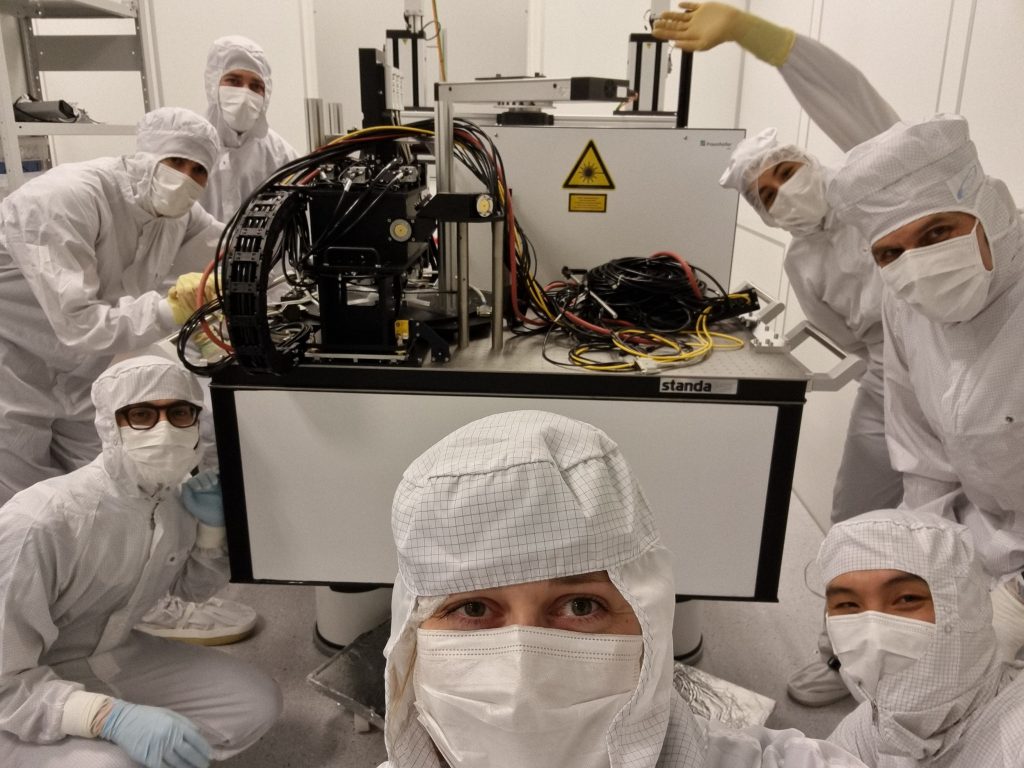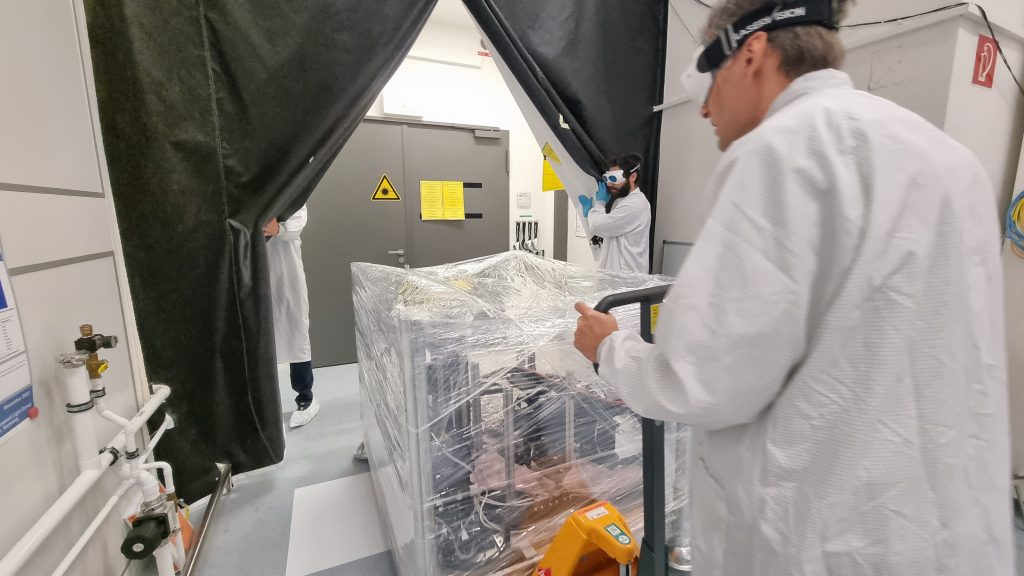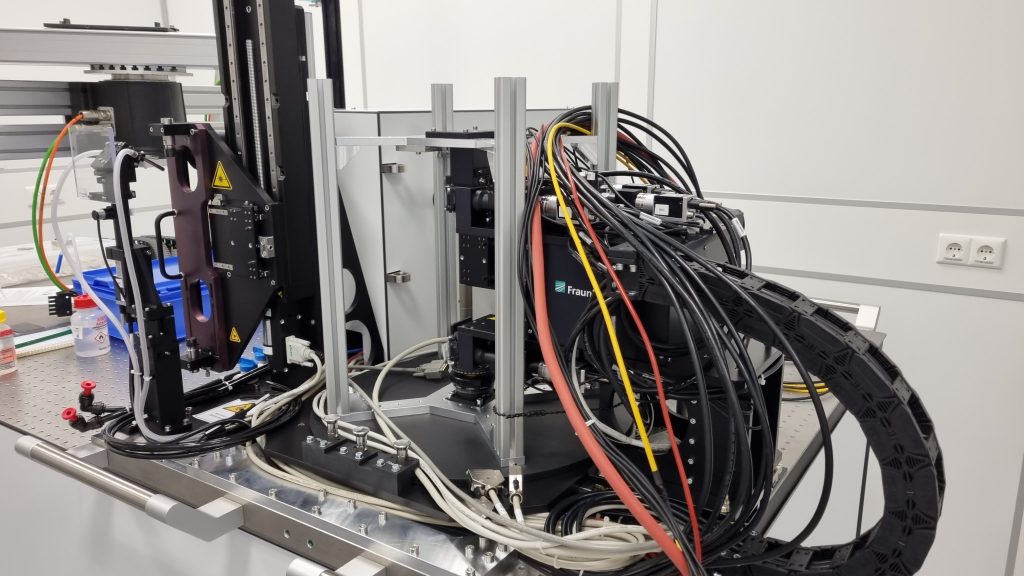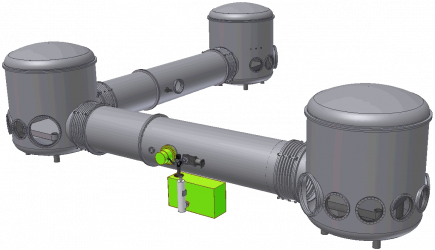
The Sub-SQL Interferometer is a step closer to realisation with the delivery of our fibre welding machine, the output of a collaborative project with the Fraunhofer Institute for Applied Optics and Precision Engineering IOF in Jena and funded by Center of Excellence Quantum Frontiers.
To ensure that the Sub-SQL Interferometer is not limited in sensitivity by suspension thermal noise, it was envisioned that quasi-monolithic suspensions similar to those used in gravitational wave detectors would be used. For the small 100 g optics in the Sub-SQL Interferometer, suspension fibres (“wires”) with diameters of 20 µm are required, thinner than the average human hair! Initial tests by our colleagues at the university of Glasgow found that indeed the technique for larger aLIGO mirrors, using a CO2 laser to weld the fused silica fibre with the fused silica test mass and penultimate mass, could be scaled down but with extremely tight tolerances required to ensure that the suspension can hang without excessive tilt.
The project with the Fraunhofer IOF was established with the goal of developing a highly accurate, repeatable and automated welding machine to produce our quasi-monolithic suspensions with the ability to easily re-weld existing suspensions for position corrections when required. Juliane von Wrangel led the efforts from the AEI 10m Prototype side to finalise the requirements and designs. The final device uses a CO2 laser with several cameras and precision actuators to control the welding process with custom software and user interface.
The 20 µm fused silica fibres will be provided by our colleagues from the Institute for Gravitational Research at the University of Glasgow.
The machine was recently delivered and installed into our clean room. Fine tuning and further testing will follow and we excitedly await the production of quasi-monolithic suspensions!


